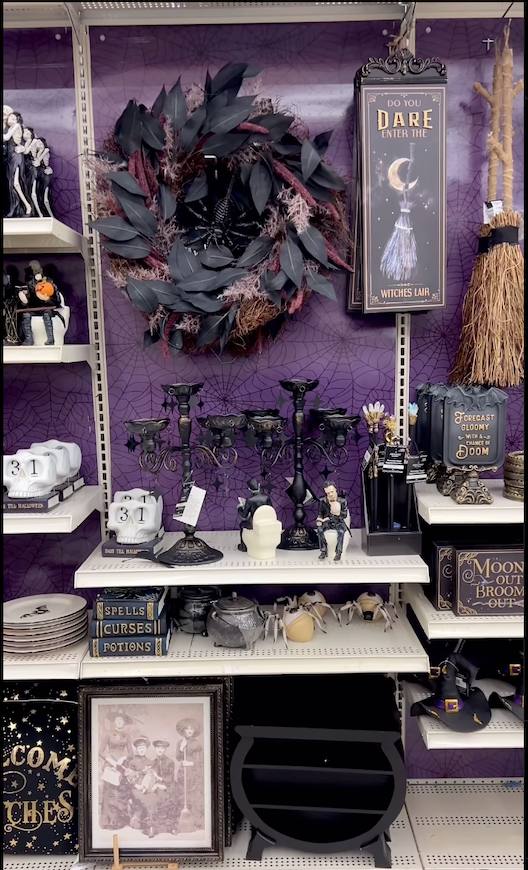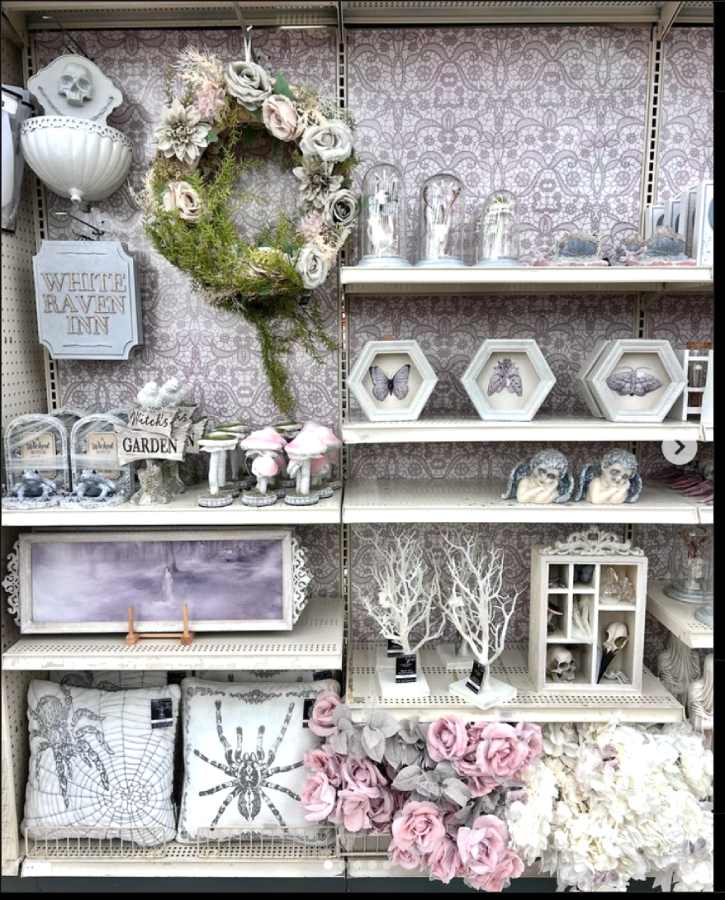The National Retail Federation (NRF) came out with its latest Halloween trends report1 and its key findings are consumers are shopping earlier (47%) and spending slightly less than in 2023, but still way above pre-pandemic spending.
Based on the NRF report and other Halloween trends findings by Pinterest and Advantage Solutions, I listed all the important Halloween trends for retail along with Halloween costs, the economics of Halloween, and actionable items you can implement to leverage the start of the holiday season and boost sales.
Key Takeaways:
- Halloween spending is projected to reach $11.6 billion in 2024, at an average of $103.63 per person.
- 72% of US adults plan to celebrate Halloween this year in one way or another, with 47% starting their Halloween shopping before October.
- Discount stores are the top shopping destination for Halloween items, while online searches are the leading source of Halloween inspiration.
- Halloween breakout trends include Summerween, Pinkoween, Dark Romance, Vintage Halloween, Spooky Spaghetti, and Pop Culture.
Halloween Demographics
The NRF Halloween trends report indicates shoppers are doing their shopping even earlier this year compared to past years and millennials are the driving force behind this trend because of their love for the holiday. Below are some of the NRF findings, unless otherwise noted.
Here are some of the key insights:
1. Majority of consumers plan to celebrate Halloween this year
NRF reports that 72% of US adults plan to celebrate Halloween this year in one way or another. This figure is consistent with last year’s record of 73%. Most plan to hand out candy (67%), decorate their home or yard (52%), dress up in costume (49%), carve a pumpkin (43%), and throw or attend a party (29%).
Meanwhile, according to Advantage Solutions’ Halloween Shopping Trends report, a whopping 91% of those surveyed plan to celebrate with at least one Halloween activity. The report outlined passive and active Halloween celebrations and the breakdown is as follows:
Passive celebrations:
- Decorating the house: 65%
- Handing out candy: 60%
- Watching Halloween or scary movies: 56%
- Dressing up in costume: 48%
- Pumpkin carving or Halloween crafts: 47%
Active celebrations:
- Going trick or treating: 50%
- Attending adult Halloween parties: 38%
- Attending Halloween-themed events: 36%
- Attending kid Halloween parties: 37%
As you can see, there are plenty of opportunities for retailers in every Halloween activity consumers plan on doing. It will all boil down to packaging, marketing, and the right timing.
2. Nearly half (47%) of consumers began Halloween shopping before October
Consumers are shopping earlier than ever. The NRF says that 47% of consumers began shopping before October, more than last year and up from 37% five years ago (2019).
Feel like you missed out on sales opportunities? Don’t fret. Consumers are shopping earlier because they like to plan ahead and spread out their spending for the holiday, but a third of consumers (33%) still plan on shopping, particularly for candy, four days to a week before Halloween.
3. Halloween-themed items were spotted in retail chains as early as July
Retail giants were the first to respond to the calls for early Halloween shopping, with Home Depot coming out with their offerings as early as July, even introducing a “Halfway to Halloween” sale in April.
Mark your calendars for Apr. 25 🗓️ We’re summoning limited quantities of Skelly plus some of our newest eerie additions: Skelly Dog, Deadwood Skelly & Frankenstein’s Monster 👻💀🧟
Save this link for easy access, and stay tuned tomorrow for a #CodeOrange: https://t.co/iXbezv8IOy pic.twitter.com/8ptT7tKBhl
— The Home Depot (@HomeDepot) April 24, 2024
Michaels dropped its first Halloween collection of the season in stores in late June, earlier than ever, announcing a “100 Days to Halloween” campaign.
Meanwhile, Target dropped their Halloween items as early as the first week of September.
4. A love for the fall season is one of the top reasons why shoppers shop early for Halloween
When asked by the NRF, consumers say the main reasons they shop early for Halloween are that they are looking forward to fall (48%), they would like to avoid the stress of last-minute shopping (38%), and Halloween is just their favorite holiday (37%).
5. Consumers aged 25 to 34 are the ones who shop for Halloween early
The NRF reports that millennials, particularly those between the ages of 25 and 34, take Halloween very seriously. Fifty-six percent of shoppers in this age group kick off their shopping before October, primarily because Halloween is their favorite holiday.
6. Discount stores are the top destination when buying Halloween items
Shoppers trek to discount stores (37%) the most when shopping for Halloween items, followed by specialty Halloween or costume stores (33%) and online (33%), according to the same NRF report.
7. Online search is the leading source of Halloween inspiration
The leading sources of Halloween inspiration continue to be online searches (38%), within a retail store or costume shop (28%), and friends and family (20%).
Appealing to Halloween Shoppers: What You Can Do
- Plan ahead: Planning ahead is the only way to stay on top of the holiday season. I recommend planning at least 12 weeks before an upcoming holiday (or sale event you plan to hold). Holiday readiness is doable, and your retail store can really thrive in this season.
- Study preferences: Knowing consumers’ preferences is key to generating sales. In this case, learning the millennials’ shopping habits can help attract those who are going to be eager to buy Halloween items.
- Don’t forget your website: Online shopping is now the preferred way for a majority of consumers to shop. Ecommerce merchandising can greatly help your online store generate sales this Halloween. Personalization, cross-merchandising, product bundling, and leveraging AI and automation (like using chatbots for customer support or shopping assistants) are a few techniques you can implement.
- Lean into seasonal merchandising: Even if online searches take the lead for Halloween inspiration, consumers still get inspiration in person at stores. So take advantage of your retail displays. I list a lot of retail Halloween display ideas you can build on to encourage customers to enter your store. From there, an effective visual merchandising strategy will encourage them to shop.
Halloween Spending: History and Trends
Halloween spending this year is slightly less than last year; but it’s not a dramatic downsizing, rather, a shift in spending priorities from costumes to candy and food. For the numbers below, I referenced the same NRF report unless otherwise indicated.
8. Halloween spending is forecasted to reach $11.6 billion this year
Total Halloween spending is expected to reach $11.6 billion after last year’s record-setting $12.2 billion. While the year-over-year figure is lower, the overall Halloween spending trajectory is rising. Consumers are still spending 20% more on average than what they spent in 2019, where total spending amounted to $8.8 billion.
9. Halloween costs are projected to be at an average of $103.63 per person
Those taking part in the spooky season plan to spend an average of $103.63 per person, around $4 less than last year’s record of $108.24. Overall, this Halloween spend forecast will more or less have the same buying power as last year, with inflation tapering off and holding steady.
10. Candy remains to be the most popular Halloween item shoppers purchase
Across spending categories, candy remains the most popular, with total spending expected to reach $3.5 billion. Total spending on decorations and costumes is expected to hit $3.8 billion each, with greeting cards coming in last at $0.5 billion.
11. Candy and food shoppers will spend more this year than in 2023
According to the Outlook report, shoppers will buy 2.3 times more candy and 2.5 times more food this year, with shoppers planning to spend $51 more this year than last.
And here’s where you can leverage the candy and food trend—candy and food shoppers at 44% and 43% respectively are more likely to mostly decide at the store.
12. Candy is a top repeat purchase this season
The same report says that 55% of shoppers will purchase candy multiple times during the Halloween season, with 25% buying them three or more times.
The biggest reason for repurchase is celebrators buying first for their household as well as for trick-or-treaters later in the month; 40% can’t resist the candy bowl and snack on candy all month long.
The top candy items are chocolates (81%) and chewy/gummy candy (69%). But most shoppers get a mixed bag (42%) so that “everyone gets what they want”. What is interesting is that candy corn and licorice, often visualized as Halloween staples, are the least likely to be purchased for Halloween (31% and 17%).
As candy is a repeat purchase, use this information to strategically time your promotions. Here are some tips:
- Early in the season, offer bundled deals or early discounts on popular candy brands (as mentioned above, chocolate and chewy candy are top favorites but most go for mixed bags).
- When it’s closer to Halloween, launch special offers to cater to shoppers stocking up for trick-or-treaters.
- To encourage repeat purchases, implement promotions that reward repeat visits like discounts on the second or third candy purchase. Have a loyalty program? Offer free products for a minimum spend or get an additional discount after a specific number of repurchases.
- Since consumers also tend to snack on these sweet treats (use them for personal consumption, in short), you can offer snack-size options meant for personal indulgence in the weeks leading up to the holiday.
13. Shoppers plan on spending more on costumes and decor this year, too
Even if these two categories come a distant second to candies, overall, shoppers are planning to spend more this year.
For decorations, 57% plan to spend $51 or more this year compared to 36% last year.
For costumes, 24% more plan to spend more than $100 in costumes compared to 18% last year.
14. Halloween spending for costumes is expected to reach $3.8 billion
Total spending on Halloween costumes is projected to be the same as last year, with total spending on adult costumes to reach $1.8 billion, children’s costumes at $1.3 billion, and pet costumes at $0.7 billion.
Halloween Breakout Trends
Decorating homes for Halloween topped the list of passive Halloween activities at 65% in the Outlook report mentioned earlier. Additionally, most people who are celebrating the holiday plan to attend Halloween parties.
Sixty-two percent plan to host a party and even have a large celebration. At least 53% of those decorating will shop for new Halloween decorations. So, there is plenty of opportunity to capitalize on this year’s breakout Halloween trends:
15. Pinkoween
Pinkoween went viral this year as early as August, with HomeGoods first reported to come out with typical Halloween items like bats, pumpkins, skeletons, and skulls in pastel pink colors in July, although it was reported by USA Today that there were hints of Pinkoween since last year in retailers like Target and Walmart.
@thespruceofficial Pinkoween is here! @HomeGoods has the best pretty pink Halloween decor finds for a fresh and fun look for your haunted home. Learn more about Pinkoween and why it’s everywhere for Halloween 2024 by tapping the link. 🎀🎃 #TheSpruce #pinkoween #halloween #diyhalloweendecor #cozyfallhome #cozyhalloween #dopaminedecor #hometrends #HomeGoodsFinds ♬ Halloween ・ cute horror song – PeriTune
This Halloween trend is a hit because it allows consumers to decorate for Halloween and fall at the same time. Home designers call it “cute and spooky with a twist”.

16. Summerween
The term “Summerween” hasn’t had any searches since Google Trends started in 2004, but the term suddenly peaked in July 2024. Amazon has Summerween products, TikTok has 45.1 million posts with the hashtag #summerween, and even the top Halloween costume store, Spirit Halloween, posted “summerween szn is in full swing.” on August 1st.
Michael’s came out with its own Summerween collection, Hippie Hallow, last June—its earliest release ever for the spooky holiday.
@itskristiii Is it too early for Halloween? #summerween #hippiehallow #hippiedecor #michaelsfinds ♬ Insomniac – Memo Boy & Chakra Efendi
Consumers are welcoming an early and extended celebration of the spooky season in summer, where Summerween parties are in full swing. As such, in the future your business would be smart to bring out Halloween-themed products as early as July!
@sheri_wilson_ Who’s planning a Summerween party? 🎃 only 131 days left till Halloween! 🍂 #summerween #halloweencountdown #halloween #spookyseason #fallaesthetic #movienight ♬ Hauntina Summerween – Hauntina
17. Dark romance
According to reports, searches for “dark romance” have grown by 51% since last October. This trend has gained traction, particularly on social media, blending gothic and romantic themes in Halloween-related content (remember the Twilight series?).
The hashtag #darkromance is used together with other popular hashtags like #halloween and #booktok. This trend can be traced to the rising popularity of romance novels on social media in the past year. I’d say these types of novels are similar to the movie The Corpse Bride by Tim Burton.
You can see this trend in Michaels’ two Halloween collections, Midnight Moon and Haunted Forest (seen below).
18. Spooky spaghetti (Halloween-themed food items)
Spooky spaghetti is one of the Halloween-themed treats perfect for families and friends looking to celebrate simply. This trend has grown by 80% since last October, marked by colorful noodles, eyeballs for meatballs, and monster faces piled on top of the sauce.
Along with spooky spaghetti, classic party foods with a spooky twist have gained popularity leading to Halloween. For example, searches for “ghost pizza” are up 850%. Even Halloween breakfast is an emerging trend. Here are some trending searches according to Pinterest’s Halloween Trend Report.
- Ghost pizza +850%
- Halloween popcorn bar +110%
- Pumpkin s’mores cookies +390%
- Pumpkin fluff +240%
- Ghost brownies +200%
- Eyeball cookies +100%
- Halloween breakfast +80%
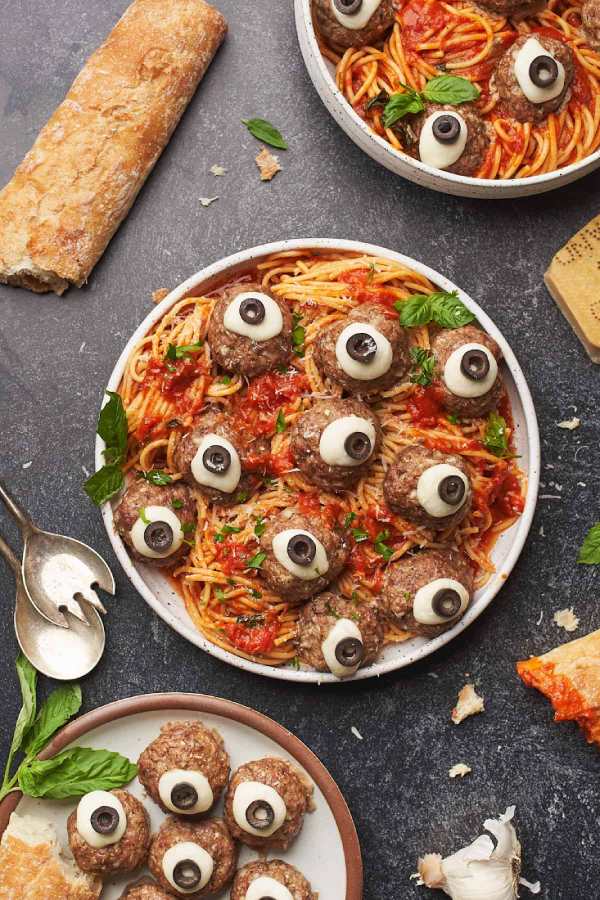
Source: A Full Living blog
19. Pop culture
Pop culture drives most of the Halloween costumes consistently. This year, Pinterest reports that these are the following Halloween trends when it comes to dressing up this season:
“It Girl” Halloween costumes:
- Charli XCX makeup +2345%
- Kesha Halloween costume +510%
- Ariana Grande bunny costume +460%
- Jhene Aiko makeup +360%
- Sabrina Carpenter Halloween +215%
- Olivia Rodrigo Halloween costume +170%
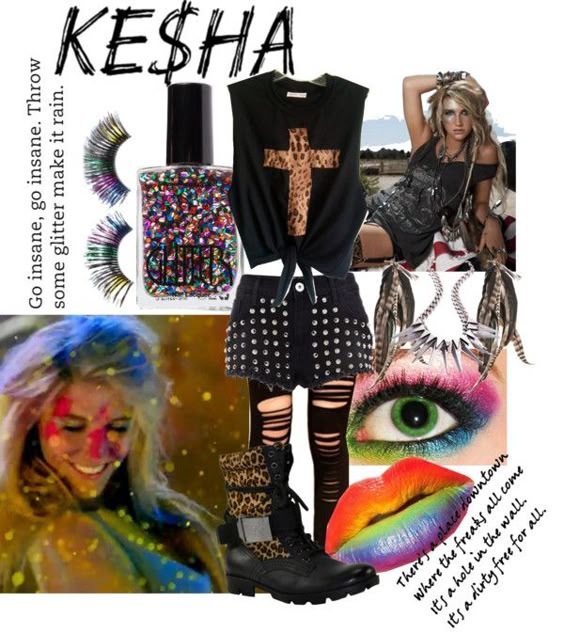
An example of a Kesha Halloween costume seen on Pinterest.
Main character costumes: TV-inspired and favorite iconic characters
- Wicked Halloween costume +890%
- Love Island Halloween costume 440%
- Mean Girls Santa costume +450%
- House of the Dragon costume +415%
- Cleo Denile costume +450%
20. Vintage Halloween
Inspired by the sentiment of growing older, millennials are driving this trend of all things vintage. As the biggest age group taking this holiday very seriously, it’s no surprise that vintage Halloween is a trend. Searches for “90s Halloween decorations” have surged by 140%. Other searches include boho Halloween, 70s Halloween, hippie Halloween decor, and disco Halloween decor.
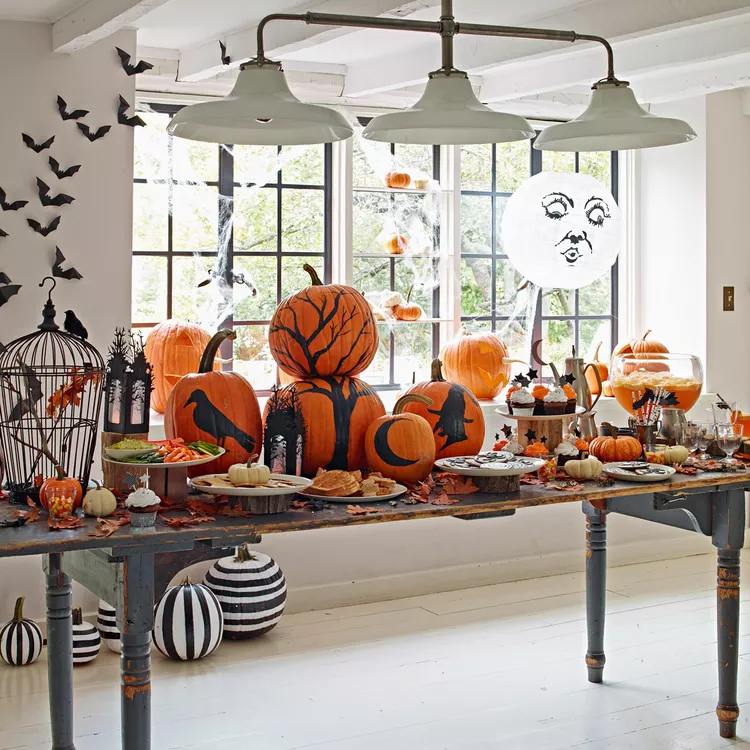
Source: BHG
How to Tap into 2024’s Breakout Halloween Trends
- Pinkoween: Capture shoppers who want to decorate for fall and Halloween at the same time by adding pink touches to your retail displays. If you offer decor items, having Halloween items in pastel pink colors is a great way to increase sales.
- Summerween: Bright splashes of color among common Halloween elements communicate a message of solidarity and support for those early Halloween celebrations.
- Dark romance: Gothic glam and dark romance appeal to the teenage and young adult age groups. This trend gives off an elegant yet eerie atmosphere, perfect for a more adult-oriented party.
- Spooky spaghetti: Halloween extends to food served at spooky parties! By offering Halloween-related food decorating accessories, you are catering to the majority of Halloween celebrators who plan to host Halloween parties. If you don’t sell food-related items, decorating displays with Halloween food items will work, too!
- Pop culture: Offer these popular pop culture Halloween costumes or plan your Halloween displays according to the latest films and TV shows with a spooky twist.
- Vintage: Speak to a millennial’s heart (and pocket) by stocking your retail displays with nostalgia and sentiments of the ‘90s.
Frequently Asked Questions (FAQs)
See below to find out the answers to the frequently asked questions regarding Halloween trends for retail.
Candy tops the list of products that people spend the most on at 95%, followed by decorations (75%), costumes (67%), and greeting cards (33%).
Candy remains the most popular product, with total spending expected to reach $3.5 billion this Halloween 2024. Decorations and customers follow with expected spending of $3.8 billion each.
For the Halloween season, consumers flock to discount stores the most, followed by going to specialty Halloween or costume stores. Browsing and buying online comes a close third.
Halloween items are sold earlier because consumers want to shop early as they are looking forward to the fall season (48%) and want to avoid the stress of last-minute Halloween shopping (38%). A little over a third (37%) of consumers just want to shop early because Halloween is one of their favorite holidays.
The National Retail Federation (NRF) reports that historical Halloween spending has hit all-time highs after the COVID-19 pandemic. Halloween spending for 2023 was at $12.2 billion, the highest since 2014. The years 2021 and 2022 were at $10.1 billion and $10.6 billion respectively. Prior to the pandemic, Halloween spending was at $8.8 billion in 2019.
Bottom Line
Halloween is evolving from a weekend celebration into an entire season of festivities and celebrations. As such, the selling season for retailers has grown longer, providing countless opportunities for sales. As retailers, it’s crucial to identify emerging Halloween trends to optimize product placements, retail displays, and implement effective in-store and online marketing campaigns that maximize shopper engagement and boost profitability during the spooky season.
References:
